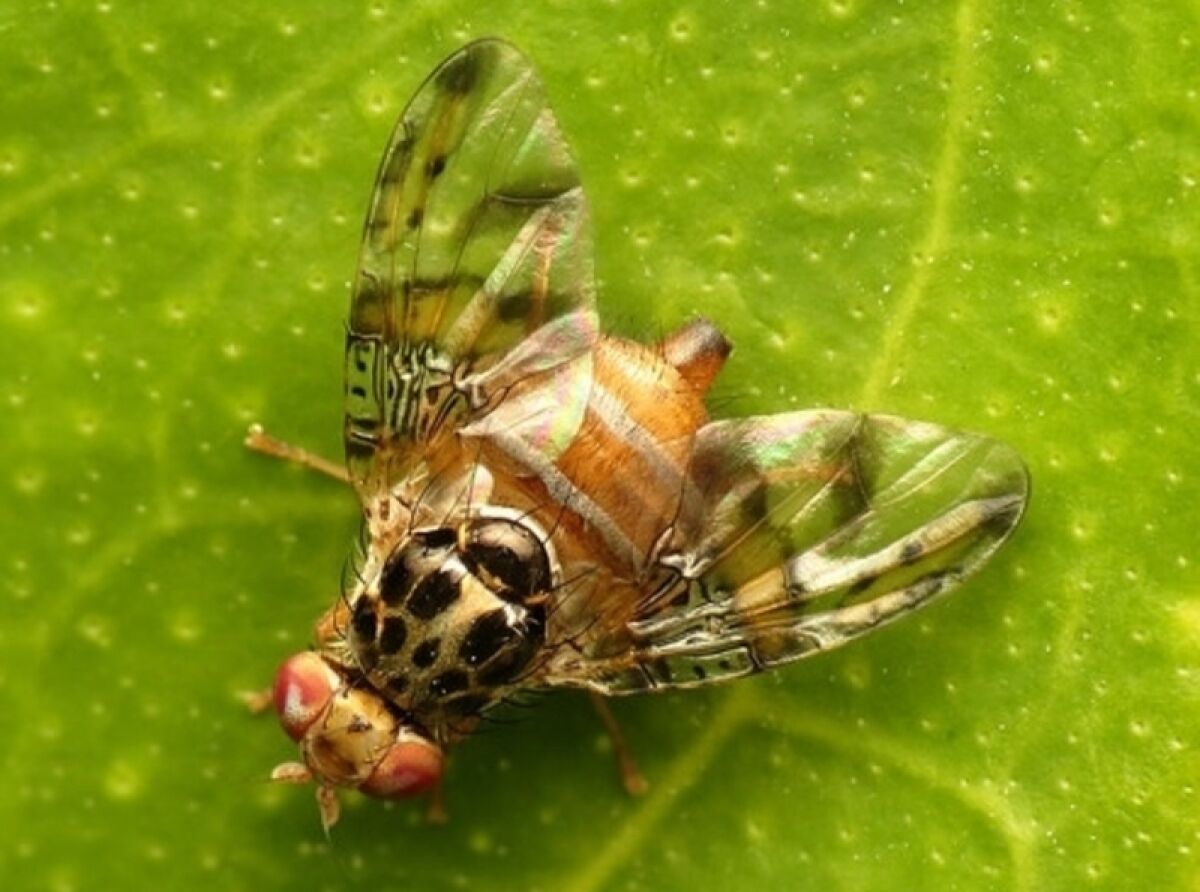In coordination with neighboring states and SENASICA, the Government of Jalisco presented the actions that it will implement to shield the state and keep it free from the Mediterranean fly.
Ceratitis capitata, commonly known as the Mediterranean fruit fly or medfly, is a yellow and brown fruit pest that originates from sub-Saharan Africa. It has no near relatives in the Western Hemisphere, and is considered to be one of the most destructive fruit pests in the world. It is an insect of great relevance in the health status of various horticultural and fruit species, and can create great economic consequences.
This work role was presented by Salvador Álvarez García, the head of the office of the Secretariat of Agriculture and Rural Development (SADER Jalisco,) and Edgar Pulido Chávez, the head of the Agency for Health, Safety and Food Quality (ASICA,) in a meeting that was held with the National Service of Health, Safety and Food Quality (SENASICA,) and the Governments of Colima and Michoacán.
In his speech, Álvarez García thanked those present, and in a special way the governor of Colima, José Ignacio Peralta Sánchez, for his willingness to join forces to eradicate this plague.
He added that the objective of the Plan of Actions for the Prevention and Containment Against the Mediterranean Fly designed by the government of Jalisco, is the establishment of a trapping network in different points of the Jalisco territory, and the surveillance of the routes of mobilization of host fruits. In particular to avoid the dispersion of the populations of the plague of the State of Colima into Jalisco state territory.
This scheme of the Jalisco Shield Trapping System against the Mediterranean fly proposes the establishment of a buffer zone of five kilometers on the state border with Colima to monitor and contain the spread of the plague.
Likewise, the Urban Zones Trapping System is established with traps in points with a high conglomeration of population, and probable mobilization to commercialized areas or recreation areas that can represent an entry point for the plague.
Álvarez García explained that the installation of baited traps is also contemplated in production areas such as mango, papaya, and guava along coastal highway 200 from Cihuatlán to Puerto Vallarta, to monitor and contain the plague.
Finally, the Surveillance System is implemented through the Verification and Inspection Points (PVIs) installed in the State of Jalisco, where the transport of host fruits of the Mediterranean fly will be intensely monitored.
Lines of action:
- Reinforce the systematic sampling carried out by Senasica personnel, with traps baited with attractant in the containment buffer of the state border with Colima, and the fruit and vegetable production area of the Jalisco coast, to monitor possible incursions by the pest populations towards the State of Jalisco.
- Opening of new trapping routes through the designation of a State-Federal resource to monitor agricultural production areas: Talpa de Allende, Mascota and Ameca; Autlán - Cocula; and Tamazula de Gordiano - Tuxcueca.
- Monitor the mobilization of host fruits through the Inspection Verification Points in the municipalities of Cihuatlán, Tuxpan, San Gabriel, Puerto Vallarta El Sol and Puerto Vallarta Las Palmas.
- Installation of baited traps (with attractants) in urban areas targeting places of the commercialization of fruits, such as food markets and municipal markets.

